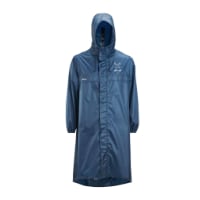F
Former member 12499
Guest
Hello Folks,
Just a brief word of advice after returning home from completing the Camino Frances from St Jean DPP to Santiago and then walking to Finesterre and Muxia - 20/4/2012 – 30/5/2012.
I felt that this is quite an important point to all you fellow Pilgrims who are starting out on YOUR Camino and as we are now in the month of June and the possibility of hot weather and sunshine.
*****When you are walking your Camino and you happen to be approaching a water drinking fountain in any town, village or by the roadside, BEFORE you drink off your last inch of water in your bottle, TURN THE TAP ON and make sure that water runs from the tap or fountain.
DO NOT do like I did. I saw a drinking fountain and drank my last inch of water in my bottle that I had been nursing for some time BEFORE I turned the tap on.
Can you imagine what it was like to discover that the fountain was bone dry – NO WATER.
I must add that this was my second bottle, the first one was already empty.
It was a very long and thirsty walk to the next fountain.
Also, if you are going to stop in the cheap 5Euros a night Albergues. YOU WILL NEED
A universal sink/bath plug. Mainly for washing your clothes in cold water.
At least two 'S' hooks or suction hooks to hang your clothes up in the showers as there is usually nowhere to hang your belongings whilst you take a shower.
6 clothes pegs. I found these more useful than the safety pins that I brought as I usually bent them.
I will try and post some more observations / advice as I get sorted out after returning home.
Best regards to you all as you start YOUR Camino, it is quite an adventure.
Charlie
Just a brief word of advice after returning home from completing the Camino Frances from St Jean DPP to Santiago and then walking to Finesterre and Muxia - 20/4/2012 – 30/5/2012.
I felt that this is quite an important point to all you fellow Pilgrims who are starting out on YOUR Camino and as we are now in the month of June and the possibility of hot weather and sunshine.
*****When you are walking your Camino and you happen to be approaching a water drinking fountain in any town, village or by the roadside, BEFORE you drink off your last inch of water in your bottle, TURN THE TAP ON and make sure that water runs from the tap or fountain.
DO NOT do like I did. I saw a drinking fountain and drank my last inch of water in my bottle that I had been nursing for some time BEFORE I turned the tap on.
Can you imagine what it was like to discover that the fountain was bone dry – NO WATER.
I must add that this was my second bottle, the first one was already empty.
It was a very long and thirsty walk to the next fountain.
Also, if you are going to stop in the cheap 5Euros a night Albergues. YOU WILL NEED
A universal sink/bath plug. Mainly for washing your clothes in cold water.
At least two 'S' hooks or suction hooks to hang your clothes up in the showers as there is usually nowhere to hang your belongings whilst you take a shower.
6 clothes pegs. I found these more useful than the safety pins that I brought as I usually bent them.
I will try and post some more observations / advice as I get sorted out after returning home.
Best regards to you all as you start YOUR Camino, it is quite an adventure.
Charlie













